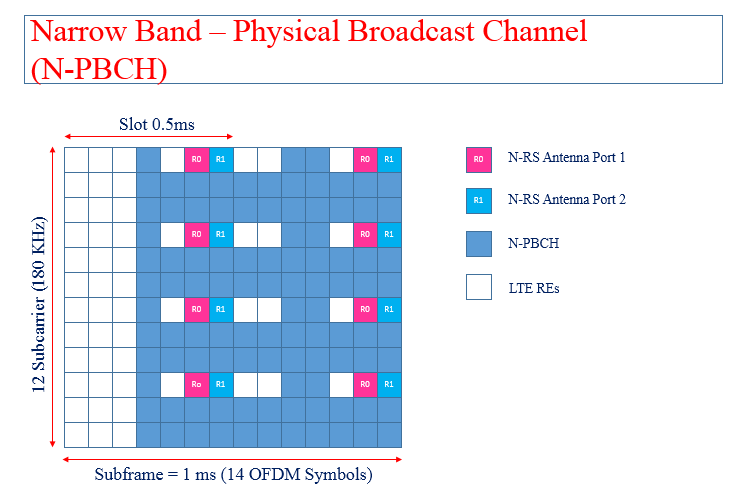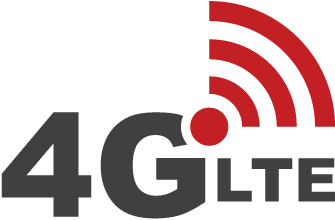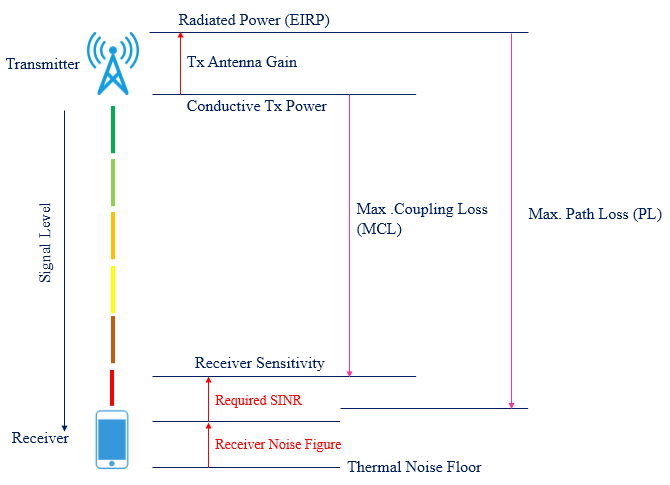Narrow Band-Physical Broadcast Channel (NPBCH)
NPBCH stands for narrow band physical broadcast channel similar to PBCH in LTE Technology. The NPBCH is used to deliver the NB-IoT Master Information Block (MIB), which provides essential information for the NB-IOT UE to operate in the NB-IoT network. NPBCH uses a 640 ms TTI, but within the TTI only subframe 0 is used in every radio frame. NPBCH is transmitted in entire subframe zero of a radio frame (except initial 3 OFDM symbols).
- Subframe Location: 0
- Subframe periodicity: 10 ms
- Basic TTI 640 ms
NPBCH Channel Characteristics.
- NPBCH carries MIB (Master Information Block) MIB contain 34 bits information after adding CR, TBCC it results in 1600 bits at the physical layer.
- MIB is QPSK modulated, QPSK can carry 2 bits in each symbol it required 1600/2 = 800 symbols or 800REs to transmitted one complete MIB.
- One MIB transmission period is about in 640 ms i.e. 64 Radio Frames
- One NB-IOT subframe can utilize about 100 RE out of 168 others are used for reference signals, LTE PDCCH etc, so to transmit entire MIB 800 REs, 8 sub-frames are required. each sub-frame’s data related to NPBCH is called a code sub-block (CSB).
- Each subblock is repeated 8 times and is transmitted in every subframe zeroth of each radio frame and each sub-block consider entire sub-frames bandwidth except initial 3 OFDM symbols.
Picture Below depicts the location of NPBCH in frequency and in time domain a Narrow Band Resource Block.
If we have a close look at the Narrowband resource block, there are 100 REs available for NPBCH in a subframe. NPBCH uses QPSK modulation, and thus 200 encoded bits can be carried in an NPBCH subframe. As stated above, NPBCH will only be transmitted in subframe 0 of the radio frame. The Transport Block Size of NPBCH is 34 bits and a 16-bit CRC is attached to the Transport Block makes it 50 bits which are encoded using the LTE Tail Bit Convolution Coding and rate-matched to generate 1600 encoded bits. The encoded bits are segmented into eight code sub-blocks (CSBs), each of which is 200-bit long and mapped to 100 QPSK symbols.
The transmission of the eight NPBCH code sub-blocks in an NPBCH TTI is depicted in the figure below. Each NPBCH subframe is self-decodable, but all the NPBCH subframes can also be jointly decoded. For certain NB-IOT UEs in good coverage, a single transmission of one CSB may be sufficient to decode the NPBCH information correctly and UEs in poor coverage or cell edge can make you of repetitive NPBCH




